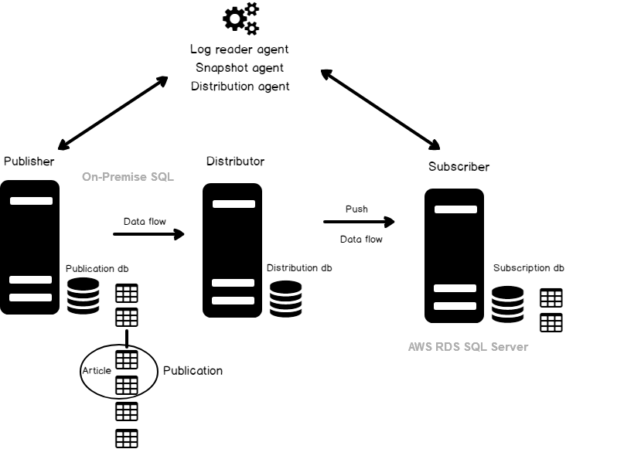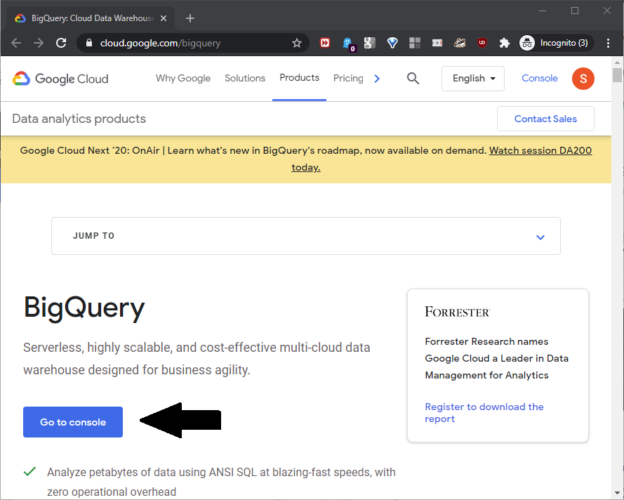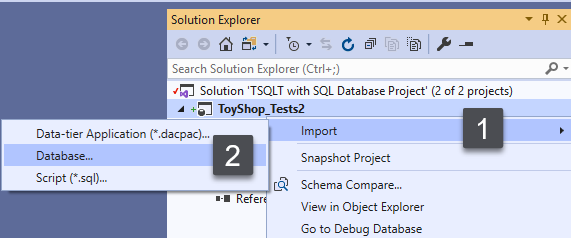In this article, we will read and import data from a PDF file using the R scripts SQL Server.
Read more »

In this article, we will read and import data from a PDF file using the R scripts SQL Server.
Read more »
In this article, I am going to show how we can identify unused SQL databases. In our organization, after release deployment, we receive the database refresh requests. To refresh the database, we were instructed to perform the following tasks:
Read more »
In this article, you will see how to use the Extract function in Power BI to extract information from columns in a Power BI dataset.
Read more »
Data professionals get requests to import, export data into various formats. These formats can be such as Comma-separated data(.CSV), Excel, HTML, JSON, YAML, Tab-separated data(.TSV). Usually, we use SQL Server integration service ETL packages for data transformations, import or export data.
Read more »
In the article, An overview of SQL Machine Learning with R scripts, we learned the R services integration with SQL Server 2019. We also explored a few useful external packages.
Read more »
Troubleshooting using Wait Stats in SQL Server is an important perspective when it comes to managing databases. As a database professional, you might have come across situations, where your end-users are not happy with reports being slower. It will leave you to find the reason for the report slowness.
Read more »
In this article, I am going to explain how we can configure iSCSI initiator and iSCSI target server on ubuntu 18.04. In my previous article, we have learned the step by step configuration process of configuring the iSCSI target and initiator in Windows Server 2016. The following are the links to these articles:
Read more »
In this article, I am going to explain in detail how to document SSIS packages using Sequence Diagrams and the importance of these diagrams in the field of software engineering, no matter which programming language are you using. In my previous article, I have talked about the various UML Diagrams that are being used to document various software engineering processes. Also, I have talked about modular ETL architecture and how to create such a modular package in SSIS. Sequence diagrams are also a part of the broader UML Diagrams which define the interaction between the various components in the system in a chronological manner.
Read more »
In this article, we will focus on SQL Machine Learning using R scripts and the use of external packages.
Read more »
In this article, I am going to demonstrate about implementing the Modular ETL in SSIS practically. In my previous article on Designing a Modular ETL Architecture, I have explained in theory what a modular ETL solution is and how to design one. We have also understood the concepts behind a modular ETL solution and the benefits of it in the world of data warehousing. We have also related the concept of microservices architecture in software development to that of the modular ETL solution.
Read more »
Azure SQL Database—a cloud-based service model provides a platform to back up the data and ensure to keep the business up-and-running even after the disaster. The data is vital and backup of the data revolves around the process of backup, restoration, recovery, Business-Continuity-Plans (BCP), and disaster recovery (DR). In this article, we will learn:
Read more »
In this article, we will explore how to split native backup and restore for AWS RDS SQL Server from the AWS S3 bucket.
Read more »
After discussing a few algorithms and techniques with Azure Machine Learning let us discuss techniques of comparison in Azure Machine Learning in this article. During this series of articles, we have discussed the basic cleaning techniques, feature selection techniques and Principal component analysis, etc. After discussing Regression and Classification analysis let us focus more on performing comparison in Azure Machine Learning.
Read more »
In this article, we will talk about the query tuning features that were announced with SQL Server 2019.
Read more »
In previous article Build a Google BigQuery Resource, we saw how to build a BigQuery resource, and then build a Google OAuth refresh token. In Part Two here, we’ll build an Azure SQL data resource, and then build, configure, and test the Azure Data Factory that will link the cloud resources we built.
Read more »
In this article, we will implement a SQL Server Replication between AWS RDS SQL Server and On-premises SQL Server instance.
Read more »
In this 37th article for SQL Server Always On Availability Groups, we will explore useful dynamic management views for monitoring availability replicas and databases.
Read more »
In this article, I am going to demonstrate in detail the Modular ETL Architecture. ETL is a vast concept which explains the methodology of moving data across various sources to destinations while performing some sort of transformations within it. This is an advanced article that considers that the user has a substantial amount of understanding about how ETL is implemented using different tools like SSIS and the underlying working principle along with how to deploy multiple packages using SSIS. It is extremely important to implement a well-designed ETL architecture for your organization’s workload, otherwise, it might lead to performance degradations along with other challenges. To keep things simple, I will just explain the Modular ETL Architecture in this article which will be followed by a detailed hands-on tutorial in the next article – “Implementing Modular Architecture in ETL using SSIS”.
Read more »
In this 36th article for SQL Server Always On series, we will explore various dynamic management views (DMV’s) for monitoring the AG replicas.
Read more »
In this article we are going to show how to get started with the Azure SQL Database auditing using specific auditing techniques to configure audit specification and reconstruct audit data trail. Companies nowadays choose to migrate to the Azure cloud platform due to multiple reasons like:
Read more »
SQL Server creates an optimized execution plan based on the available inputs such as statistics, indexes. By default, it chooses a cost-optimized execution plan and executes the query. Sometimes, we use SQL queries table hints to override the default mechanism. Developers popularly use WITH (NOLOCK) query hint in a Select statement to avoid blocking issues.
Read more »
We can rely on Azure SQL to build reliable, high-quality relational database solutions. In the cloud, Google offers BigQuery as a big data product that has large data capacities, and a standard SQL syntax. Although it can handle data manipulation, it works better as a data warehouse product because of certain product limitations. If we can integrate these products, they become even more useful. This two-part article will show how to link these products together. Part one here will show how to build a BigQuery resource, and then build a Google OAuth refresh token, or security key. Part two will show how to set up an Azure SQL data resource, and build, configure, and test the Azure Data Factory that will link those resources.
Read more »
In this 35th article in SQL Server Always On Availability Groups, we will implement a custom policy for monitoring AG groups.
Read more »
In this article, we will learn an approach to source data from AWS Redshift and populate it in the Azure SQL database, where this data can be used with other data on the SQL Server for desired purposes.
Read more »
This article talks about multiple ways to install tSQLt for SQL unit testing database projects managed through SQL Server Data Tools (SSDT).
Read more »© 2025 Quest Software Inc. ALL RIGHTS RESERVED. | GDPR | Terms of Use | Privacy